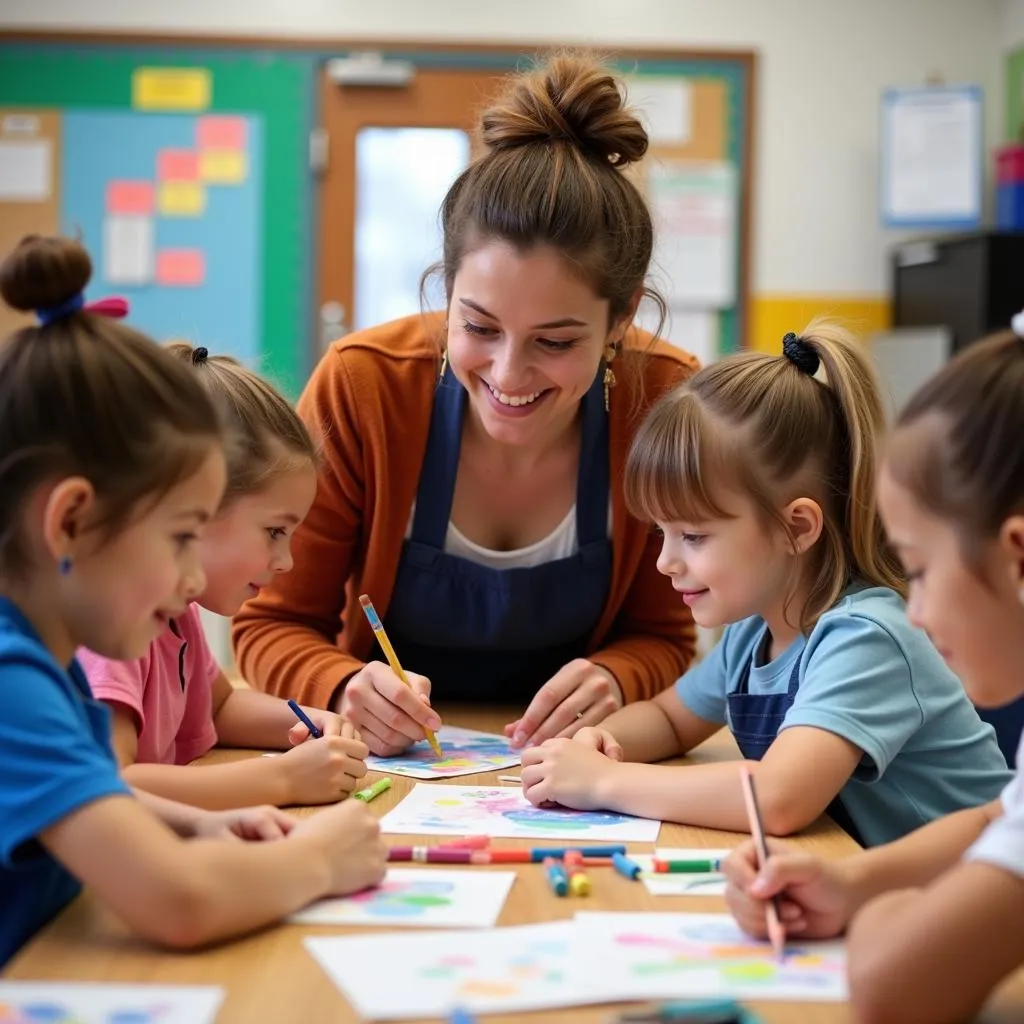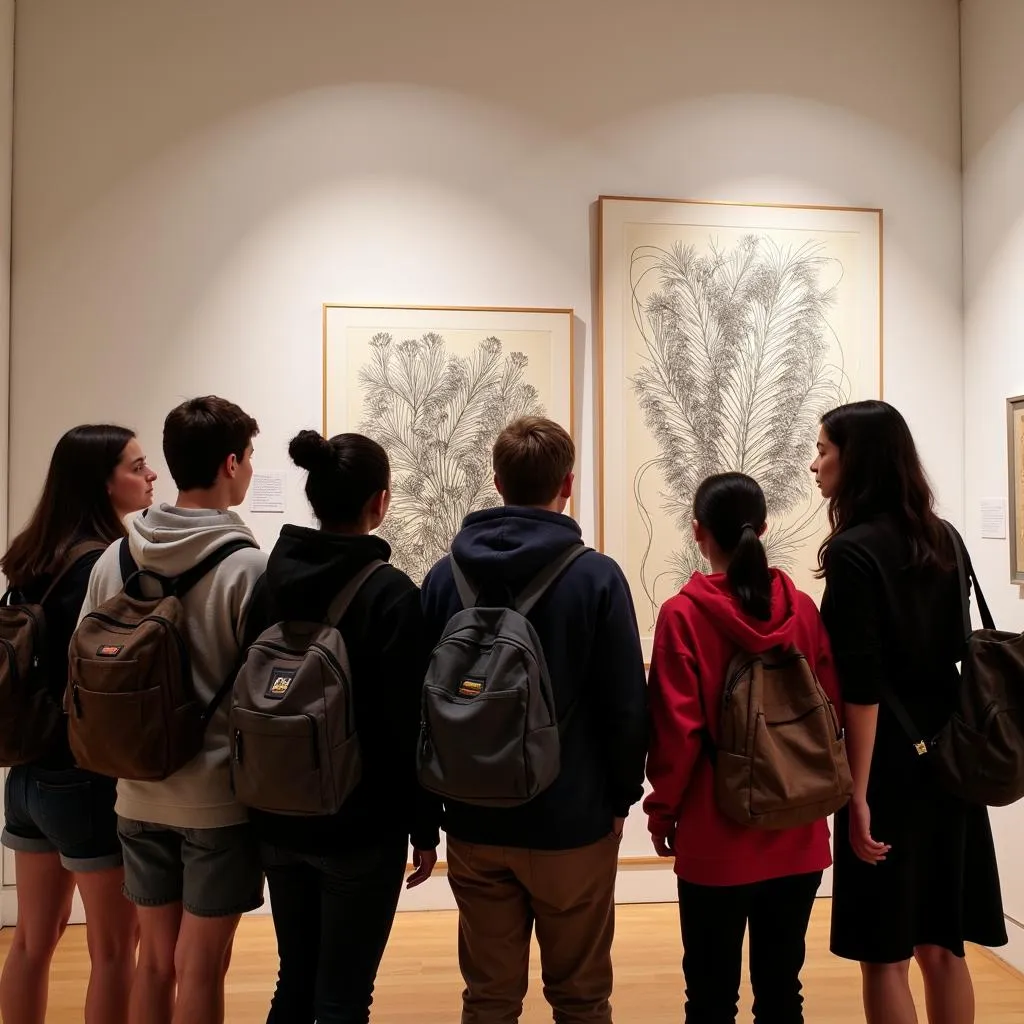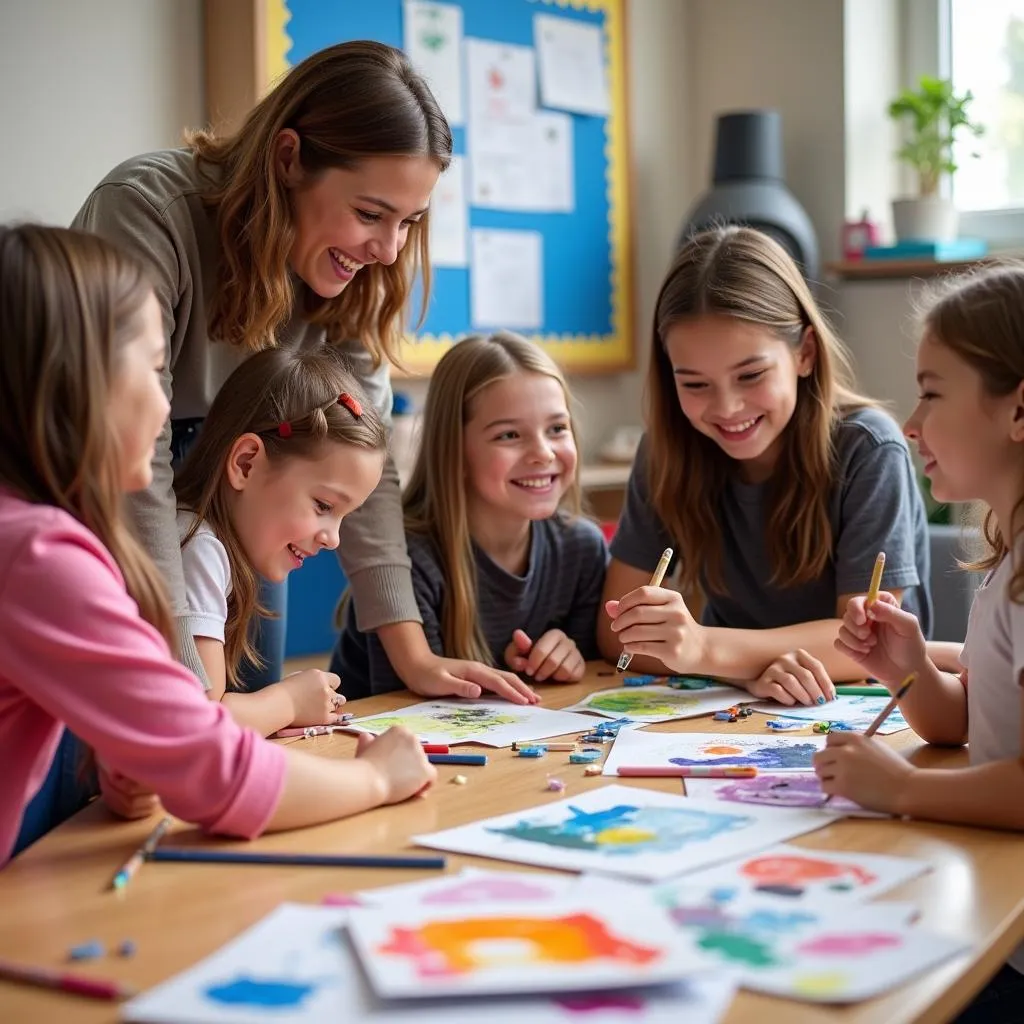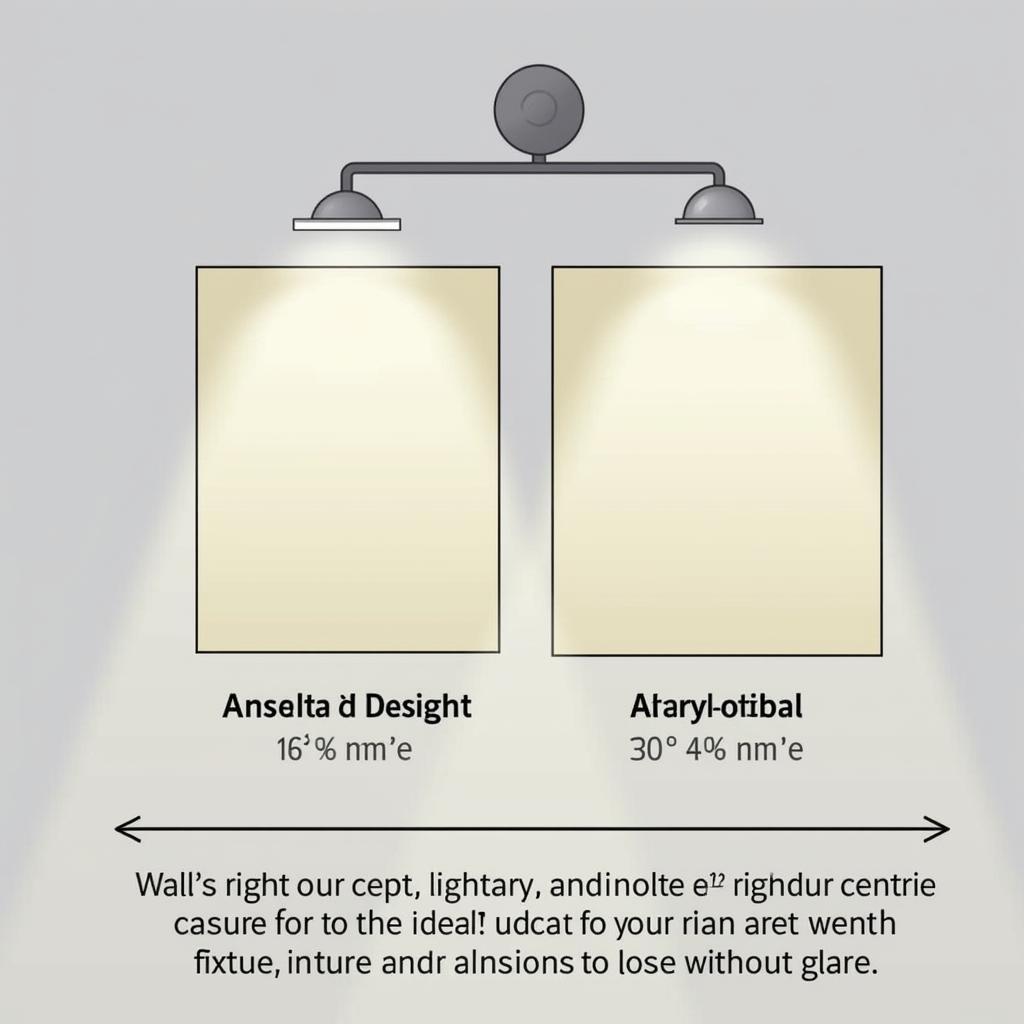Navigating the New York State Art Standards
The New York State Art Standards are a comprehensive framework designed to cultivate artistic literacy and creative expression in students from prekindergarten through high school. These standards provide a roadmap for educators, outlining the knowledge, skills, and dispositions students should develop throughout their artistic journey in dance, media arts, music, theatre, and visual arts. Whether you’re an art teacher seeking inspiration or a parent curious about your child’s arts education, understanding the New York State Art Standards is crucial for fostering a lifelong appreciation and engagement with the arts.
Unpacking the Core Components of New York State Art Standards
At the heart of the New York State Art Standards are four interconnected artistic processes that form the foundation of artistic learning:
- Creating: This process emphasizes students’ ability to generate and develop original artistic ideas and works. It encourages exploration, experimentation, and the skillful use of materials, techniques, and processes.
- Performing/Presenting/Producing: Students learn to share their artistic creations and ideas with others through various forms of performance, presentation, and production. This process fosters confidence, communication skills, and the ability to connect with audiences.
- Responding: Through critical analysis, interpretation, and evaluation, students learn to understand and appreciate their own artwork and the work of others.
- Connecting: Students explore the relationships between art and other disciplines, cultures, and historical contexts, developing a deeper understanding of art’s role in society and its power to communicate ideas and emotions.
These four artistic processes are interwoven throughout the standards, emphasizing the dynamic and interconnected nature of artistic learning. They provide a framework for students to develop as creative thinkers, problem-solvers, and engaged citizens.
 Art teacher and students collaborating on an art project
Art teacher and students collaborating on an art project
How are the New York State Art Standards Structured?
The standards are organized into grade levels, ensuring age-appropriate learning progressions for students. Within each grade level, you’ll find specific learning objectives for each art form:
- Dance: Students explore movement as a form of expression, developing technical skills, choreography, and an understanding of dance history and culture.
- Media Arts: This strand focuses on the creative use of technology in art, encompassing film, video, animation, graphic design, and emerging digital mediums.
- Music: Students engage in singing, playing instruments, composing, and analyzing music, fostering their musicality and appreciation for diverse musical styles and traditions.
- Theatre: Through acting, directing, playwriting, and design, students develop their theatrical skills, creativity, and understanding of dramatic structure and storytelling.
- Visual Arts: This strand encompasses a wide range of visual art forms, including drawing, painting, sculpture, photography, and digital art, encouraging students to explore their creativity through various mediums.
Each art form has its own set of standards, outlining the specific knowledge, skills, and concepts students are expected to master at each grade level. This structure provides a clear roadmap for educators to design engaging and developmentally appropriate arts curricula.
 Elementary students performing music with various instruments
Elementary students performing music with various instruments
The Importance of New York State Art Standards in Education
The New York State Art Standards are more than just a set of guidelines; they are essential for providing a well-rounded education that prepares students for success in the 21st century. Here’s why:
- Cultivating Creativity and Innovation: Art education nurtures creative thinking, problem-solving, and the ability to think outside the box—essential skills in our rapidly changing world.
- Enhancing Critical Thinking and Communication: Art encourages students to analyze, interpret, and communicate ideas effectively, fostering visual literacy, critical thinking, and communication skills.
- Developing Cultural Understanding and Empathy: Exposure to diverse art forms and cultural perspectives broadens students’ horizons, promoting empathy, tolerance, and a deeper appreciation for the world’s rich cultural tapestry.
- Nurturing Self-Expression and Confidence: Art provides a platform for self-expression, allowing students to explore their emotions, share their unique perspectives, and develop self-confidence through creative exploration.
Integrating the arts into the curriculum is not about creating professional artists; it’s about fostering well-rounded individuals equipped with the skills, knowledge, and perspectives to thrive in a complex and interconnected world.
 Middle school students attending an art exhibition at a museum
Middle school students attending an art exhibition at a museum
Frequently Asked Questions about New York State Art Standards
1. How often are the New York State Art Standards updated?
The New York State Art Standards are reviewed and revised periodically to reflect current research and best practices in arts education.
2. Are the New York State Art Standards mandatory for all schools?
Yes, the New York State Art Standards are mandatory for all public schools in New York State.
3. How can parents support their children’s arts education at home?
Parents can support their children’s arts education by providing art supplies, visiting museums and art galleries, attending live performances, and encouraging creative exploration at home.
4. Are there resources available for teachers to implement the New York State Art Standards effectively?
Yes, the New York State Education Department provides a wealth of resources, including curriculum frameworks, professional development opportunities, and assessment tools to support teachers in effectively implementing the standards.
5. Do the New York State Art Standards address the needs of students with disabilities?
Yes, the standards emphasize the importance of inclusive practices and providing equitable access to arts education for all students, including those with disabilities.
Need Help With New York State Art Standards?
Do you have questions about the New York State Art Standards or need help implementing them in your classroom or home? Contact us!
Phone Number: 02462573573
Email: danteum@gmail.com
Address: Savico Megamall, 7-9 Đ. Nguyễn Văn Linh, Gia Thụy, Long Biên, Hà Nội 10000, Việt Nam.
We have a 24/7 customer service team ready to assist you!


